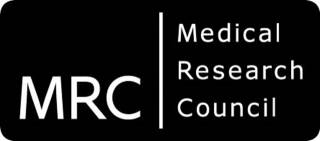Melatonin

Over the past decade, our group have focussed on the evaluation of melatonin as an adjunct agent to HT in the piglet model of HI. We have established that high dose intravenous melatonin is safe and augments HT. We established that neuroprotection is time-critical and dose dependent; melatonin levels of 15-30mg/mL is required early follow HI for its strong free-radical scavenging properties. Solubility enhancers for melatonin such as ethanol are often required for intravenous use. However, ethanol may not be safe for use in newborns. In collaboration with Chiesi Pharmaceuticals S.p.A, our studies use a proprietary melatonin formulation that is safe for use in babies. This adds to the translational relevance of our model.
Most recently, we completed the EMPATHY (Epo and Melatonin for Perinatal Asphyxia with Therapeutic Hypothermia) study, a large MRC funded preclinical study investigating Epo and melatonin as adjunct agents to cooling in our piglet model of HI. Treatment with HT + melatonin was associated with consistent beneficial effects across our three primary outcome measures: recovery of background aEEG cerebral activity, improved cerebral energy metabolism on magnetic resonance spectroscopy Lac/NAA peak ratio and reduction in TUNEL positive cells on immunohistochemistry. HT + Epo therapy had the greatest effect on oligodendrocyte survival. Combination therapy with HT + melatonin + Epo did not provide added neuroprotection from that seen with HT + melatonin or HT + Epo. We suggested that longer studies are needed and staggered therapy; melatonin given early for its free radical scavenger properties and Epo later, to exploit its neuro-regenerative potential.
A systematic review recently showed a paucity of large, high quality clinical trials of melatonin for babies with NE. Our preclinical studies highlight an urgent need to establish well-designed clinical trials of melatonin for at risk infants with NE.
Key Publications:
Robertson NJ, Faulkner S, Fleiss B, Bainbridge A, Andorka C, Price D, et al. Melatonin augments hypothermic neuroprotection in a perinatal asphyxia model. Brain. 2013;136(Pt 1):90-105.
Robertson NJ, Martinello K, Lingam I, Avdic-Belltheus A, Meehan C, Alonso-Alconada D, et al. Melatonin as an adjunct to therapeutic hypothermia in a piglet model of neonatal encephalopathy: A translational study. Neurobiol Dis. 2019;121:240-51.
Robertson NJ, Lingam I, Meehan C, Martinello KA, Avdic-Belltheus A, Stein L, et al. High-dose melatonin and ethanol excipient combined with therapeutic hypothermia in a newborn piglet asphyxia model. Sci Rep. 2020;10(1):3898.
Pang R, Avdic-Belltheus A, Meehan C, Martinello K, Mutshiya T, Yang Q, et al. Melatonin and/or erythropoietin combined with hypothermia in a piglet model of perinatal asphyxia. Brain Communications. 2021;3(1).
Ahmed J, Pullattayil SA, Robertson NJ, More K. Melatonin for neuroprotection in neonatal encephalopathy: A systematic review & meta-analysis of clinical trials. Eur J Paediatr Neurol. 2021;31:38-45.
Magnesium

Magnesium is a widely available agent, providing neuroprotection through the blockage of NMDA receptors. We assessed the neuroprotective benefit of intravenous MgSO4 administered as a bolus and continuous infusion to negate effects of significant peak and trough serum concentrations that may be associated with hypotension and periods of sub-therapeutic drug exposure. We showed that MgSO4 was safe, and augmented cooling with reduction in overall cell death and increased oligodendrocyte survival. We did not observe signidicantion improvement in aEEG recovery or MRS cerebral energetics suggesting that the neuroprotective benefit is incremental to HT and unlike to translate to substantial added improvement to cooling in clinical trials.
Key Publications:
Lingam I, Meehan C, Avdic-Belltheus A, Martinello K, Hristova M, Kaynezhad P, et al. Short-term effects of early initiation of magnesium infusion combined with cooling after hypoxia-ischemia in term piglets. Pediatr Res. 2019;86(6):699-708.
Remote ischaemic postconditioning as a cheap and practical therapy after hypoxia-ischaemia

Ischaemic conditioning was first described in 1986. If the heart/brain is exposed to repeated short periods of ischaemia / reperfusion (typically 4 repeated cycles of 10 mins), cells downsteam of the ischaemia are protected against a subsequent prolonged period of ischaemia. Protection is also evident with post conditioning (the short periods of ischaemic /reperfusion given after the index ischaemia) and if given to a remote non vital organ such as the limb. This is termed remote ischaemic post conditioning (RIPostC)
We have shown that four 10 minute cycles of RIPostC after cerebral hypoxia-ischaemia protected the cerebral white matter based on magnetic resonance spectroscopy biomarkers and immunohistochemistry.
Key Publications:
Ezzati M, Bainbridge A, Broad KD, Kawano G, Oliver-Taylor A, Rocha-Ferreira E, et al. Immediate remote ischemic postconditioning after hypoxia ischemia in piglets protects cerebral white matter but not grey matter. J Cereb Blood Flow Metab. 2016;36(8):1396-411.
 Close
Close

